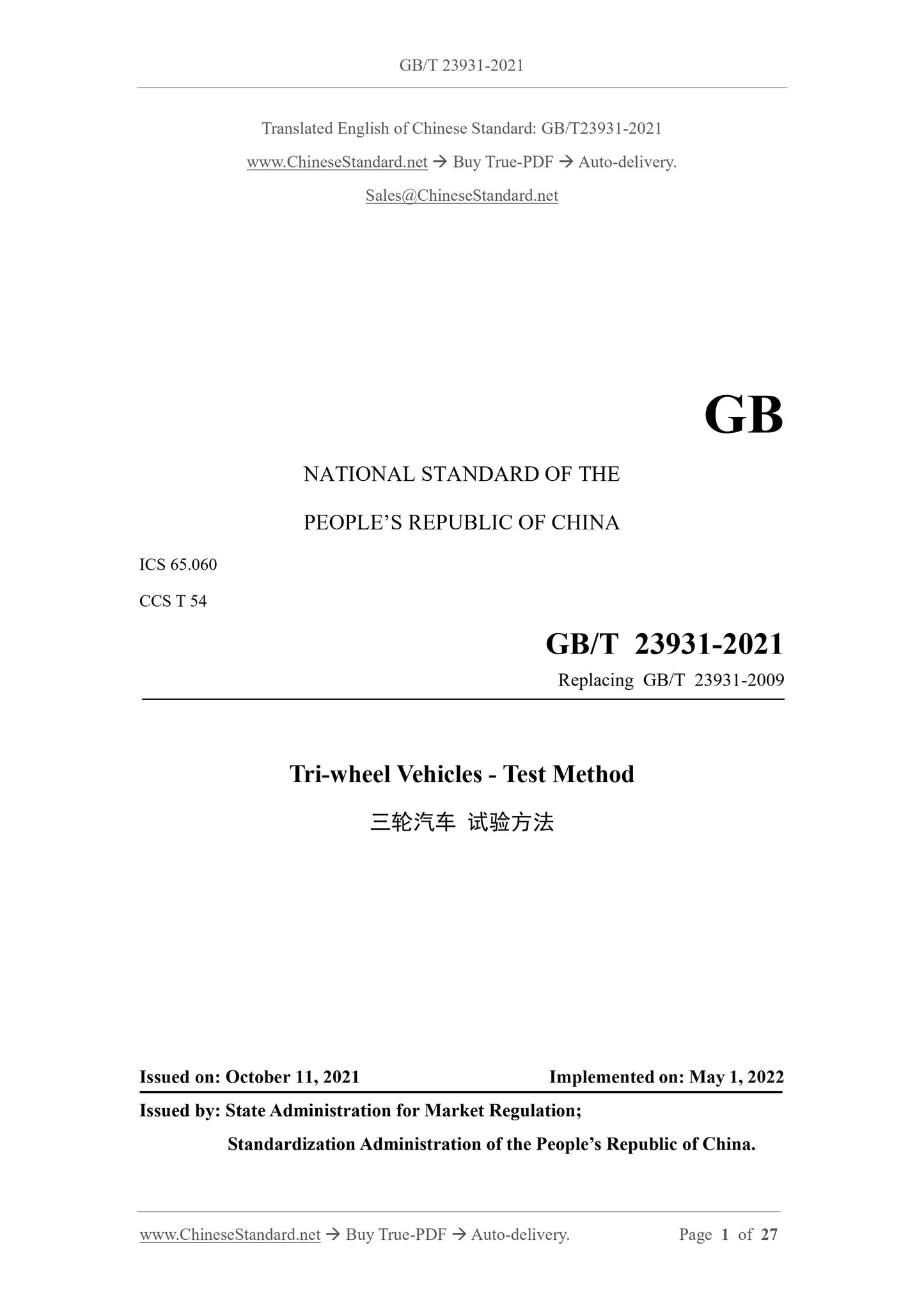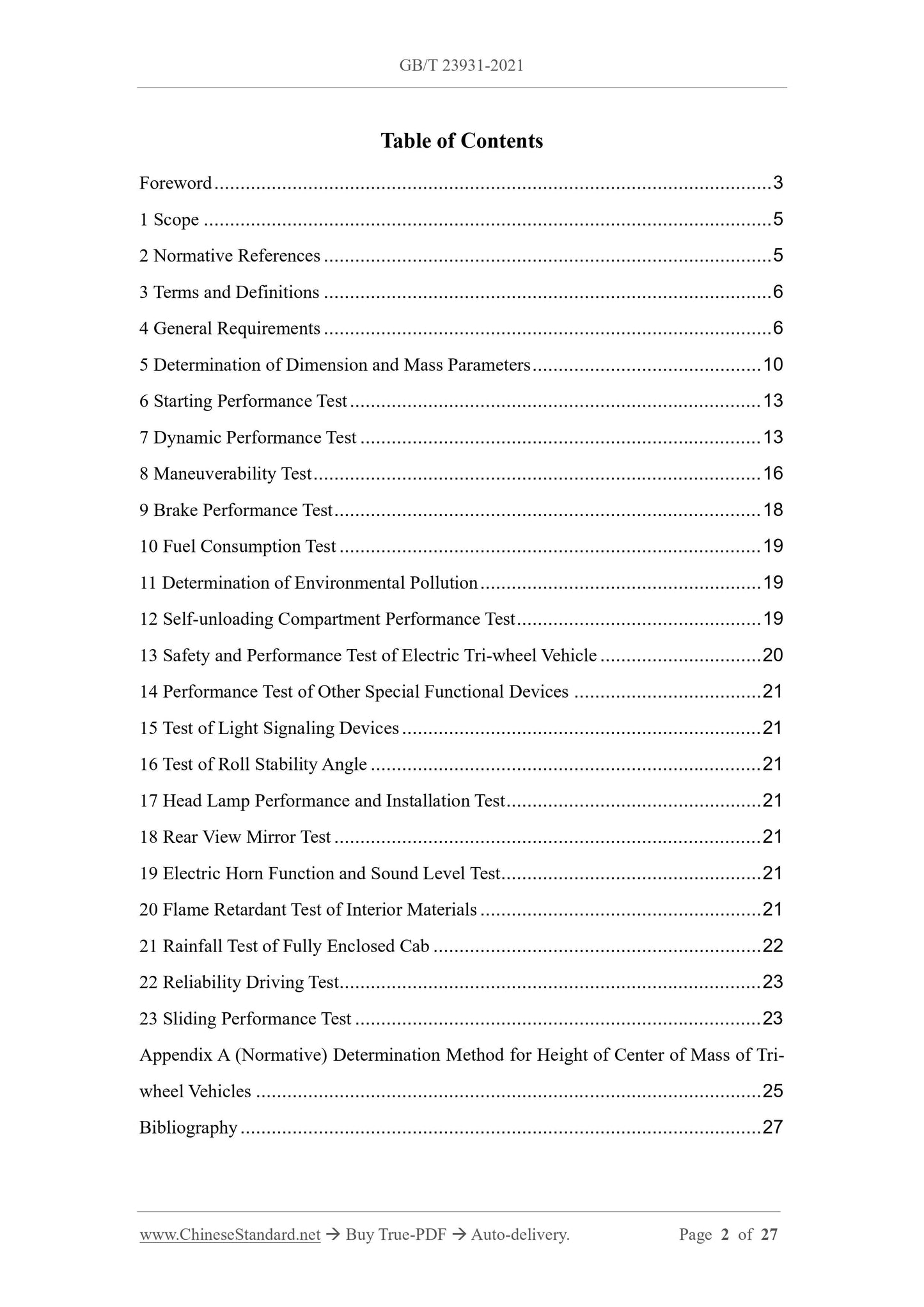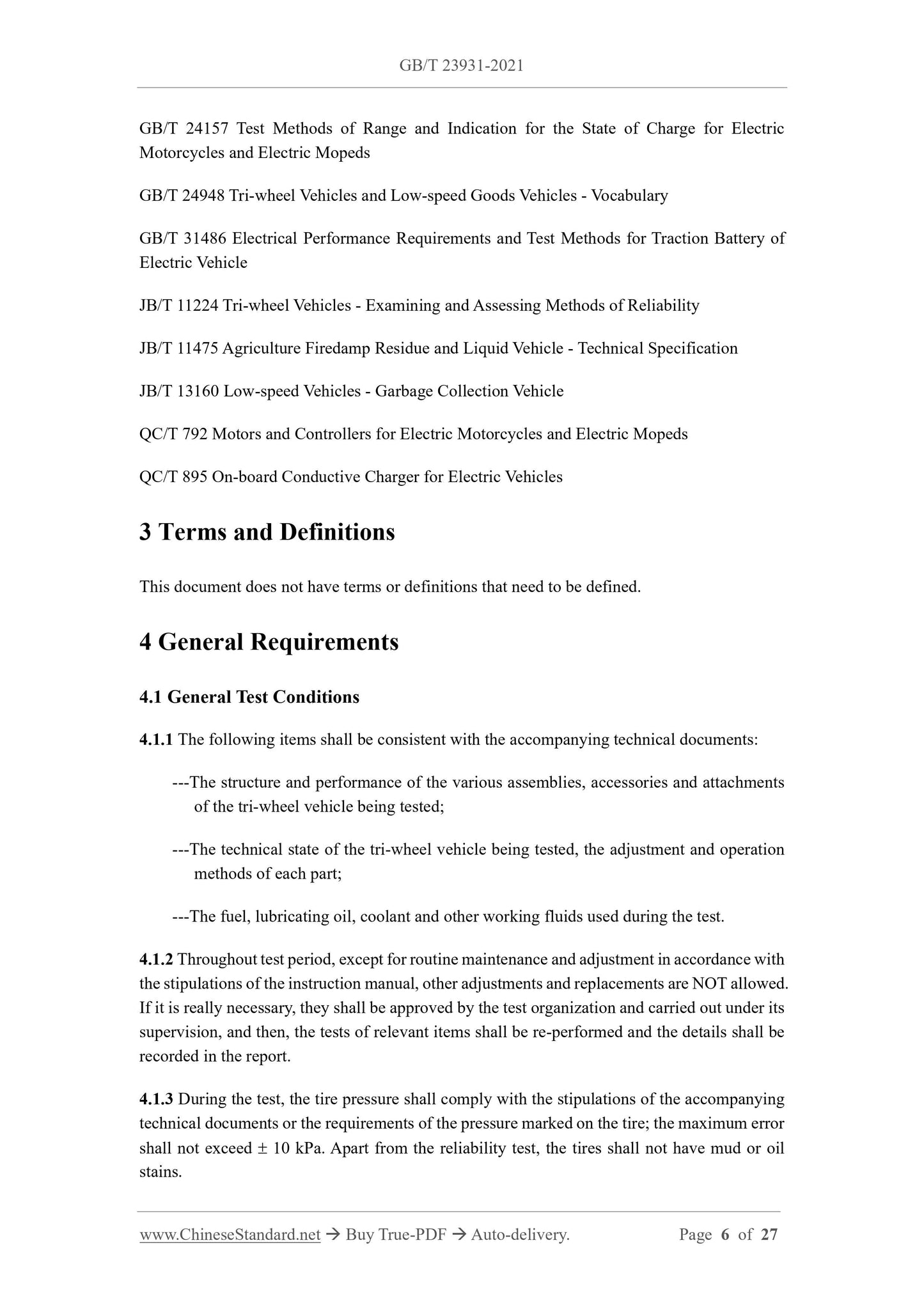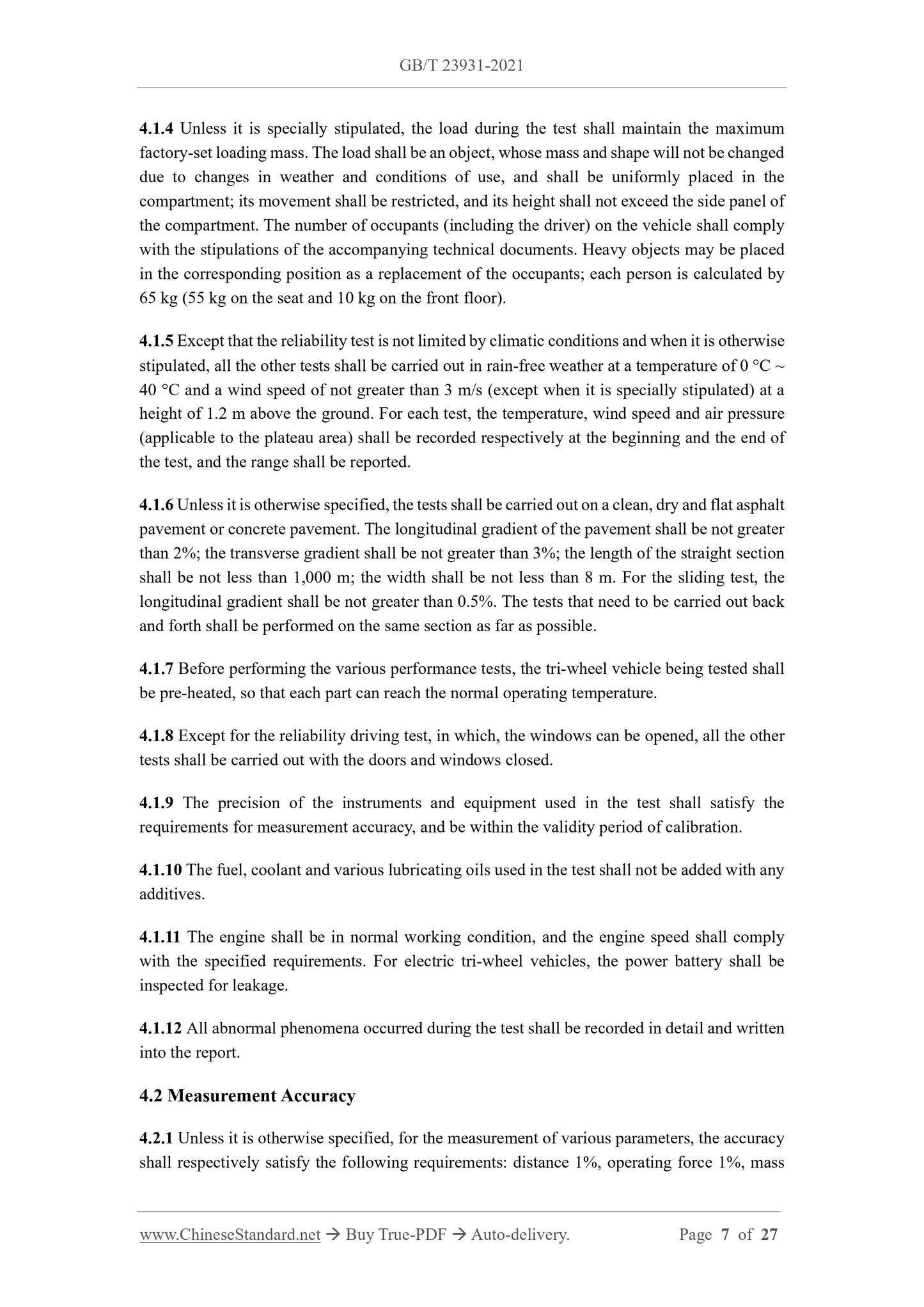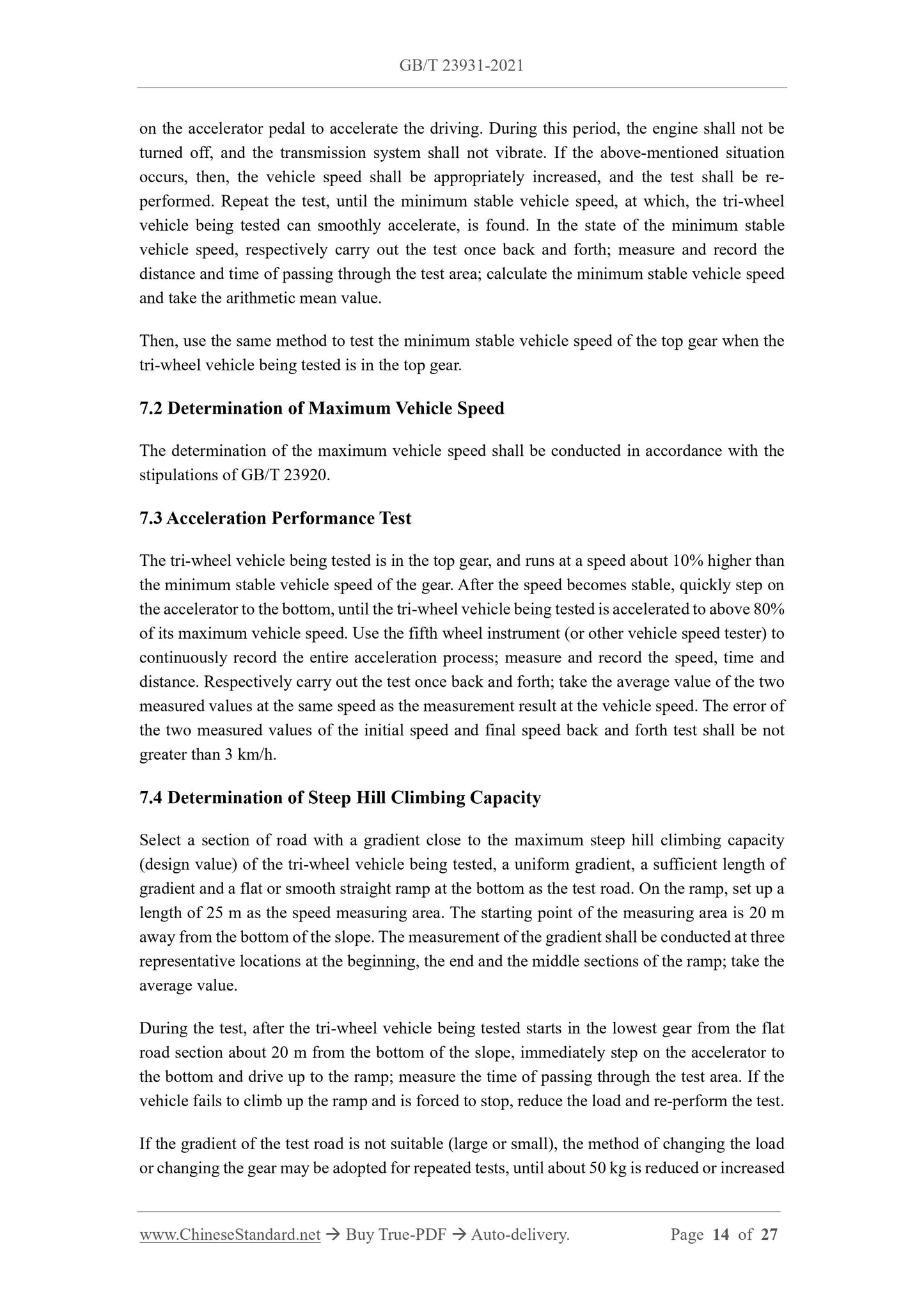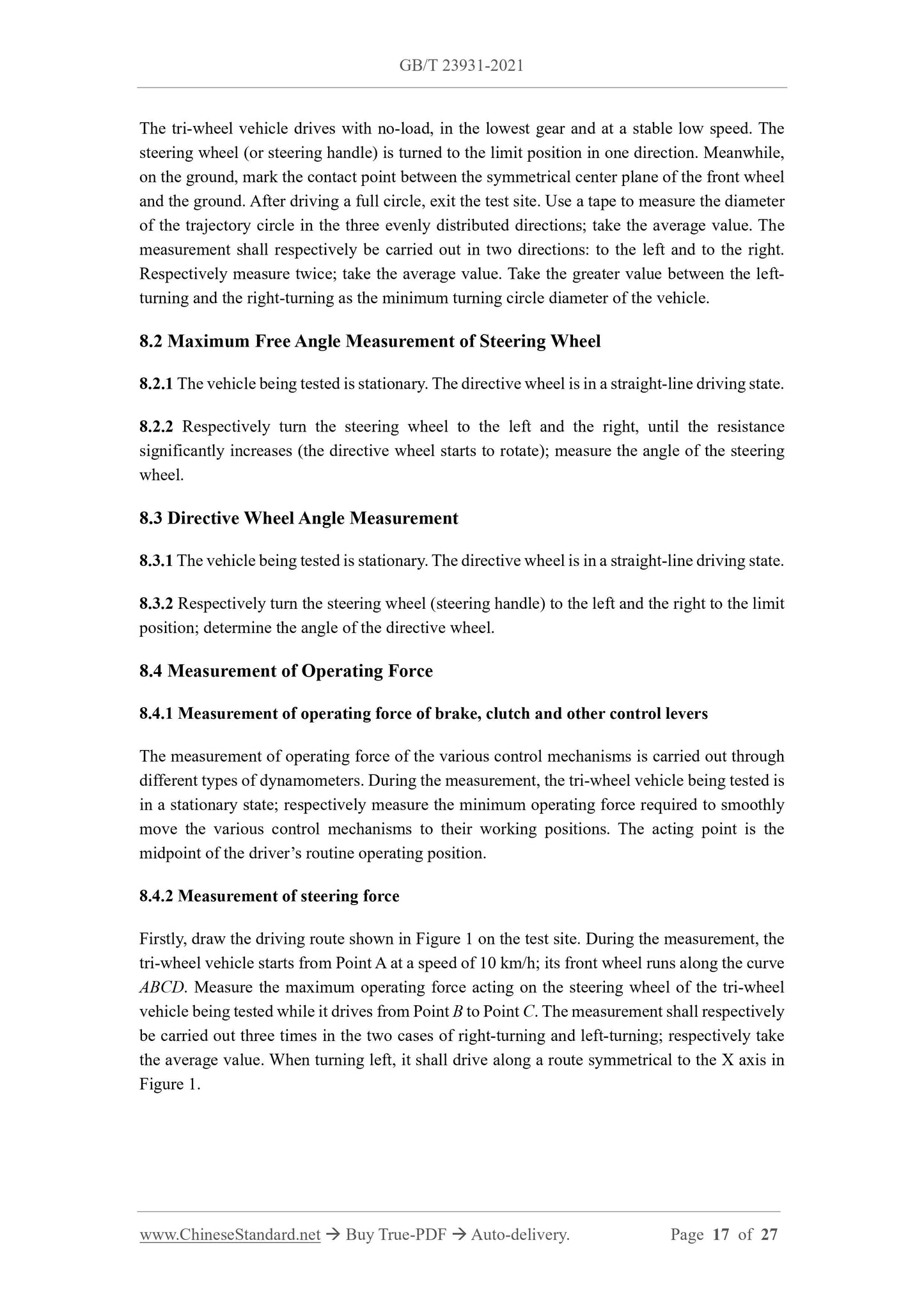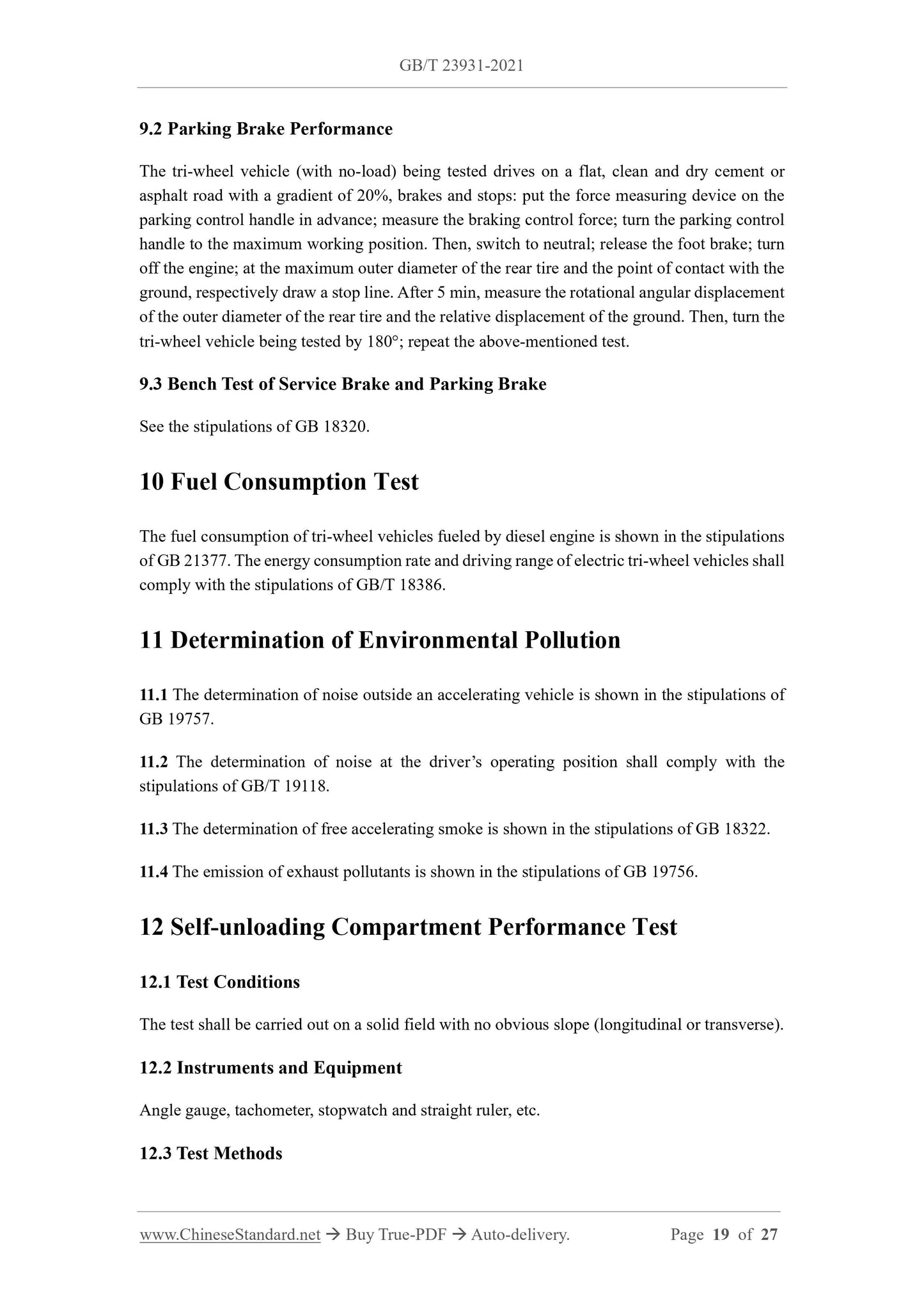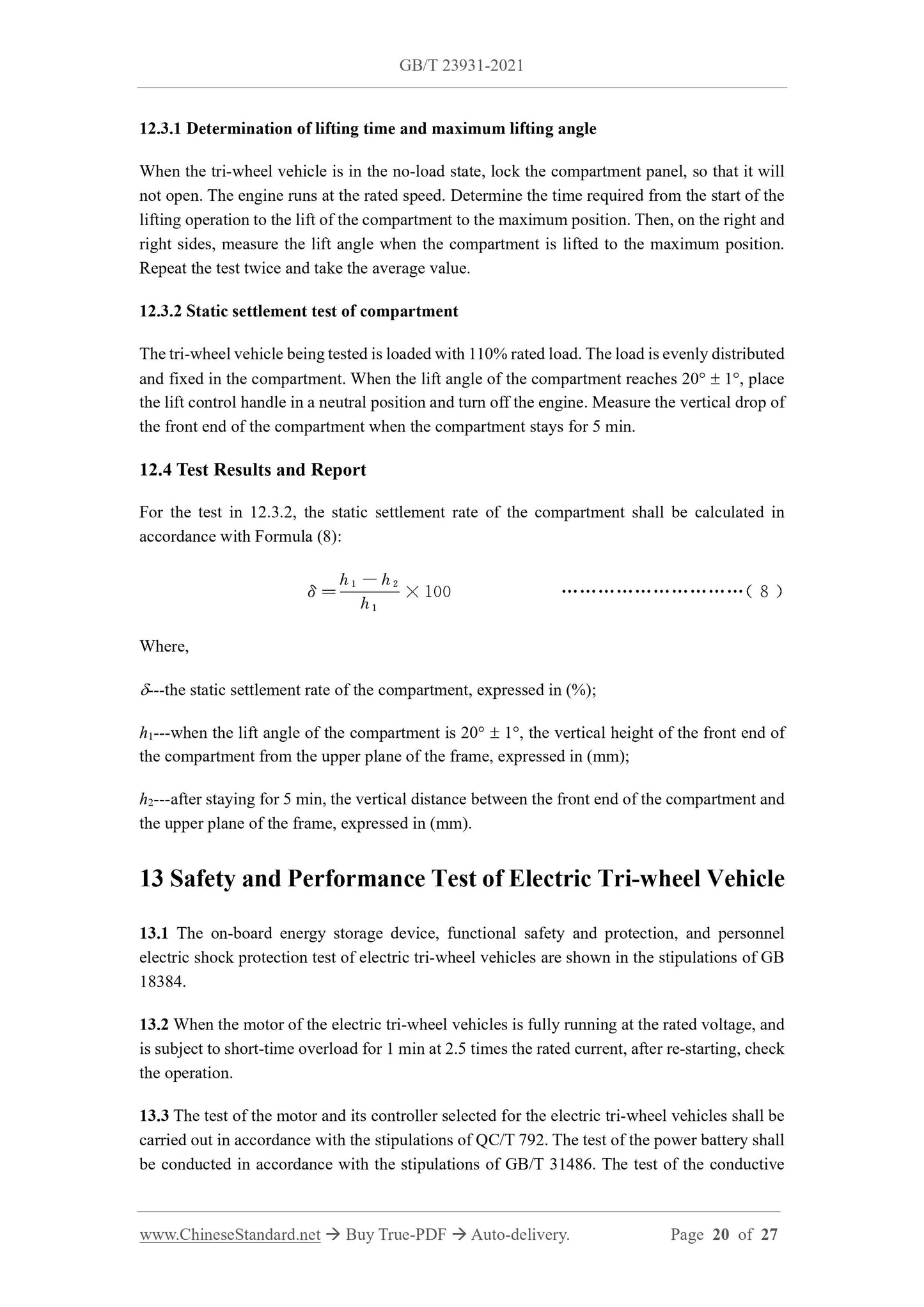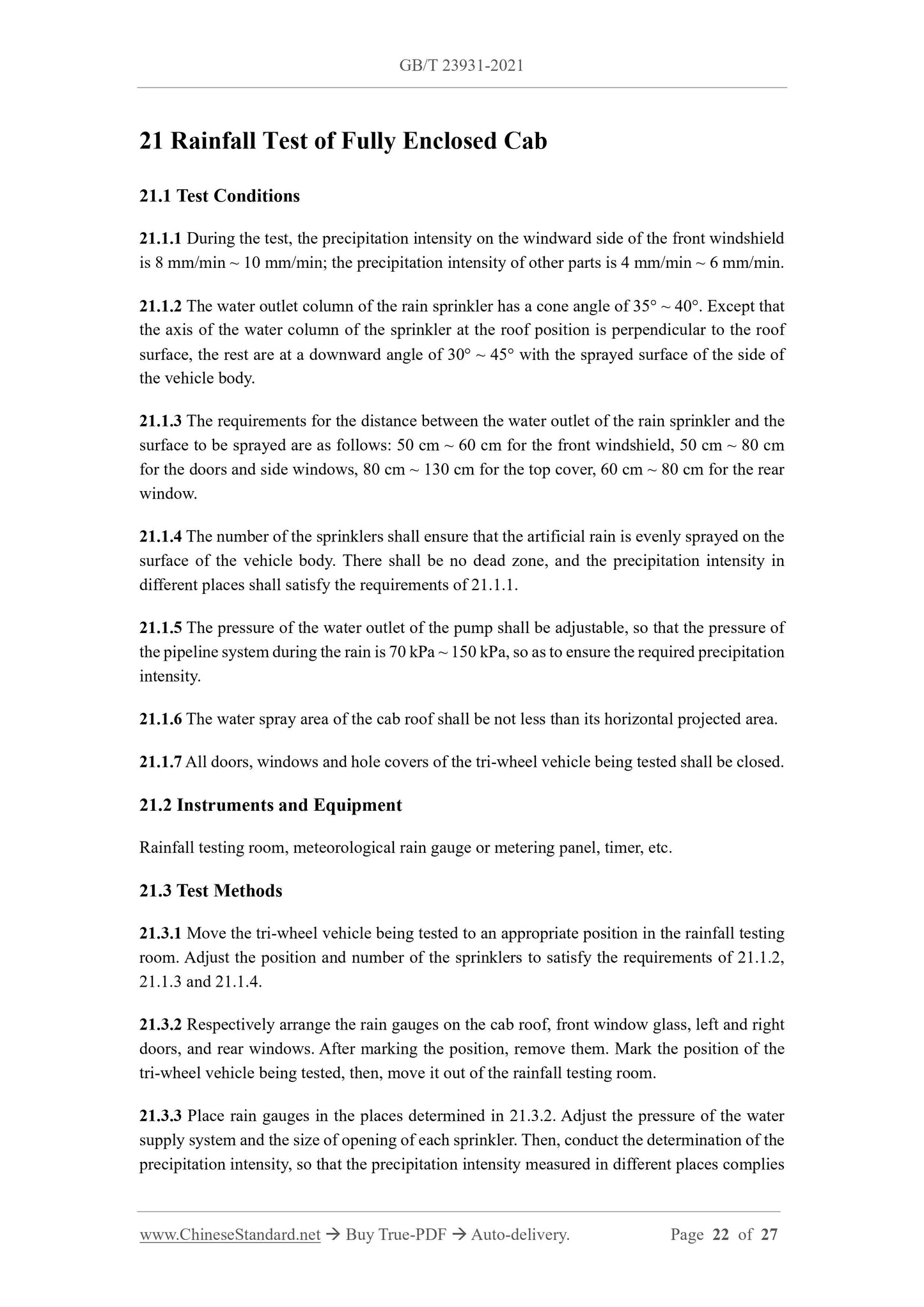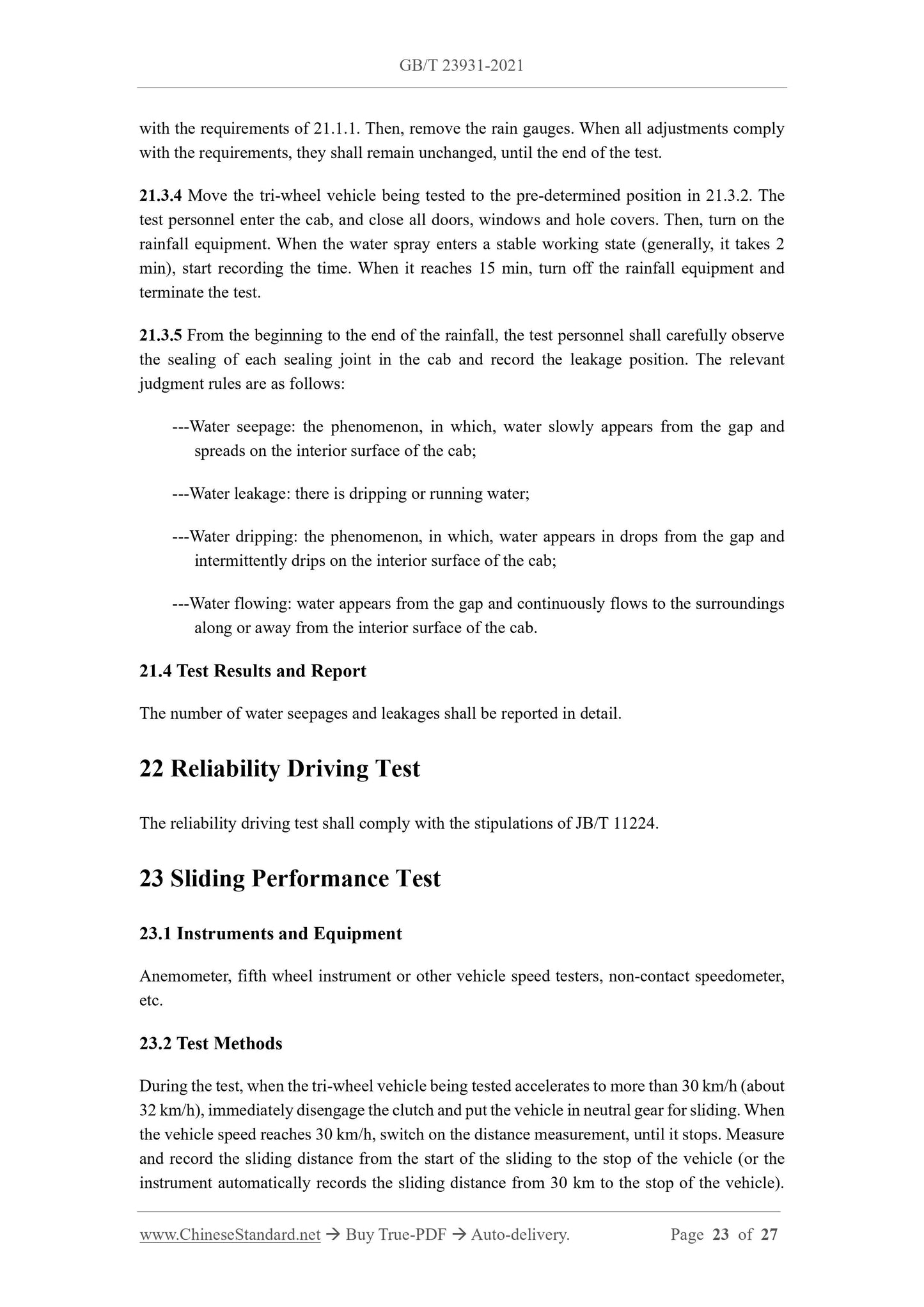1
/
of
10
www.ChineseStandard.us -- Field Test Asia Pte. Ltd.
GB/T 23931-2021 English PDF (GB/T23931-2021)
GB/T 23931-2021 English PDF (GB/T23931-2021)
Regular price
$290.00
Regular price
Sale price
$290.00
Unit price
/
per
Shipping calculated at checkout.
Couldn't load pickup availability
GB/T 23931-2021: Tri-wheel Vehicles - Test Method
Delivery: 9 seconds. Download (and Email) true-PDF + Invoice.Get Quotation: Click GB/T 23931-2021 (Self-service in 1-minute)
Newer / historical versions: GB/T 23931-2021
Preview True-PDF
Scope
The fuel consumption of tri-wheel vehicles fueled by diesel engine is shown in the stipulationsof GB 21377. The energy consumption rate and driving range of electric tri-wheel vehicles shall
comply with the stipulations of GB/T 18386.
11.1 The determination of noise outside an accelerating vehicle is shown in the stipulations of
GB 19757.
11.2 The determination of noise at the driver’s operating position shall comply with the
stipulations of GB/T 19118.
11.3 The determination of free accelerating smoke is shown in the stipulations of GB 18322.
11.4 The emission of exhaust pollutants is shown in the stipulations of GB 19756.
12.1 Test Conditions
The test shall be carried out on a solid field with no obvious slope (longitudinal or transverse).
12.2 Instruments and Equipment
Angle gauge, tachometer, stopwatch and straight ruler, etc.
12.3 Test Methods
12.3.1 Determination of lifting time and maximum lifting angle
When the tri-wheel vehicle is in the no-load state, lock the compartment panel, so that it will
not open. The engine runs at the rated speed. Determine the time required from the start of the
lifting operation to the lift of the compartment to the maximum position. Then, on the right and
right sides, measure the lift angle when the compartment is lifted to the maximum position.
Repeat the test twice and take the average value.
12.3.2 Static settlement test of compartment
The tri-wheel vehicle being tested is loaded with 110% rated load. The load is evenly distributed
and fixed in the compartment. When the lift angle of the compartment reaches 20 1, place
the lift control handle in a neutral position and turn off the engine. Measure the vertical drop of
the front end of the compartment when the compartment stays for 5 min.
12.4 Test Results and Report
For the test in 12.3.2, the static settlement rate of the compartment shall be calculated in
accordance with Formula (8):
Where,
---the static settlement rate of the compartment, expressed in (%);
h1---when the lift angle of the compartment is 20 1, the vertical height of the front end of
the compartment from the upper plane of the frame, expressed in (mm);
h2---after staying for 5 min, the vertical distance between the front end of the compartment and
the upper plane of the frame, expressed in (mm).
13.1 The on-board energy storage device, functional safety and protection, and personnel
electric shock protection test of electric tri-wheel vehicles are shown in the stipulations of GB
18384.
13.2 When the motor of the electric tri-wheel vehicles is fully running at the rated voltage, and
is subject to short-time overload for 1 min at 2.5 times the rated current, after re-starting, check
the operation.
13.3 The test of the motor and its controller selected for the electric tri-wheel vehicles shall be
carried out in accordance with the stipulations of QC/T 792. The test of the power battery shall
be conducted in accordance with the stipulations of GB/T 31486. The test of the conductive
Basic Data
| Standard ID | GB/T 23931-2021 (GB/T23931-2021) |
| Description (Translated English) | Tri-wheel Vehicles - Test Method |
| Sector / Industry | National Standard (Recommended) |
| Classification of Chinese Standard | T54 |
| Word Count Estimation | 17,115 |
| Issuing agency(ies) | State Administration for Market Regulation, China National Standardization Administration |
Share
